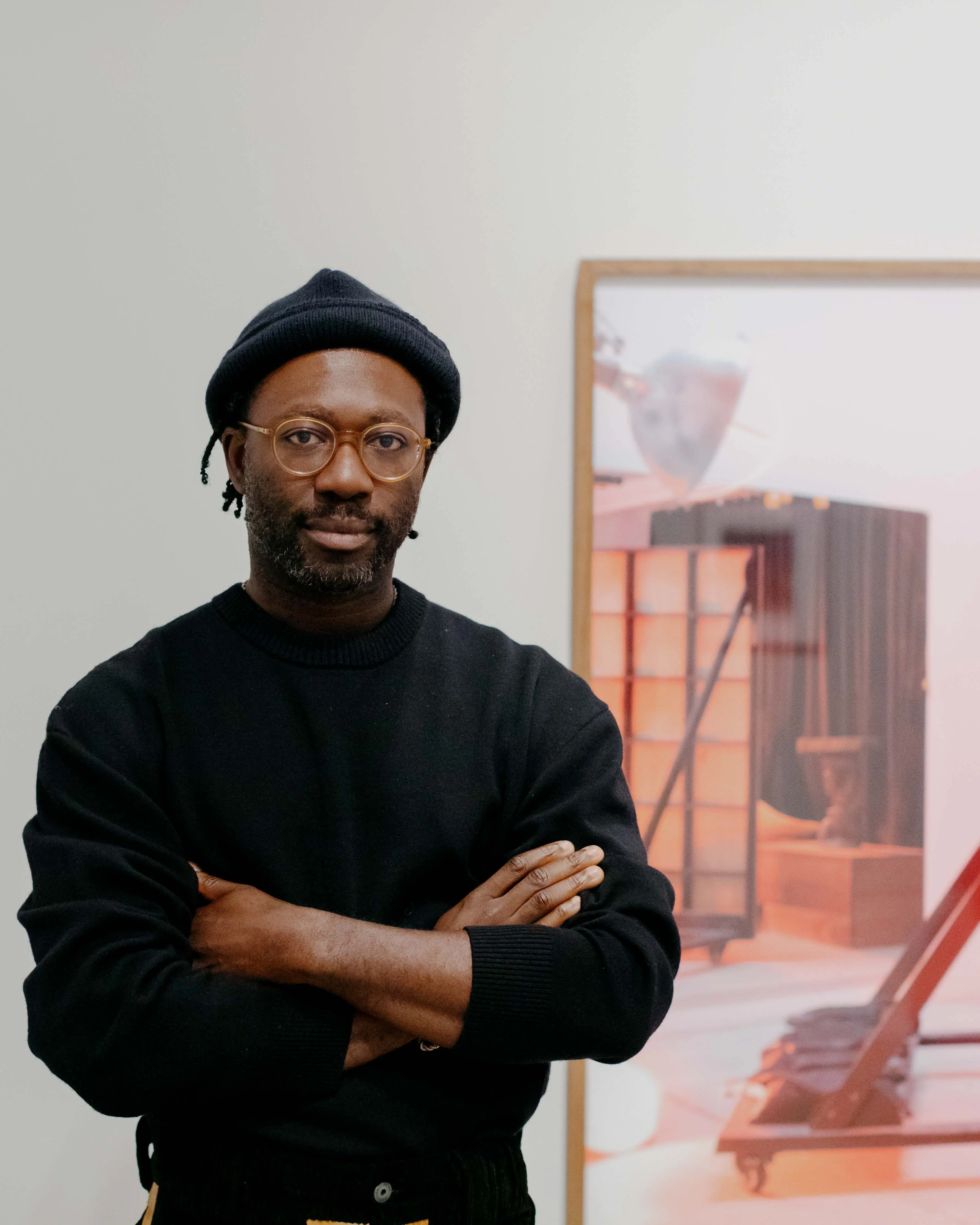Marked by a close attention to bodies and their exposure, Paul Mpagi Sepuya’s work deconstructs the traditional language of portraiture, subverting the photographic studio by revealing its settings in compositions that are both realistic and artificial. His work places maximum emphasis on technical tools (cameras, tripods, mirrors), resulting in performative images wrapped in an atmosphere that is as intense as it is enigmatic.
The group of photographs presented at the 14th Mercosul Biennial brings together core elements of Sepuya’s practice, in which affection and desire coexist to build confessional narratives: each work seems to contain stories of solitude, where the studio becomes a voyeuristic space, simultaneously welcoming and intrusive. His lens acts as a mechanism for amplifying intimacies: by scrambling and mirroring the space, the artist’s experiments reaffirm the centrality of non-heteronormative bodies caught in relationships of privacy or exhibitionism. In Sepuya’s universe, the image emerges as a marker of a lyrical, dark, and fragmentary contemporaneity.
Henrique Menezes
Paul Mpagi Sepuya (United States, 1982) develops a photographic work that explores queer identities, intimacy, and the construction of images, challenging the conventions of traditional photography. The notions of self-image, reflection, community, prose, fiction, and masculinity are central to his research, which extends across exhibitions, installations, and photo books. His work is in the collections of the Guggenheim, Hammer Museum, LACMA, MoMA, Stedelijk Museum, and Tate Modern, among others. Recent exhibitions include museums such as the Barbican Centre, the Whitney Museum, the Getty Museum, and the San Francisco Museum of Modern Art. He lives in Los Angeles, United States.
